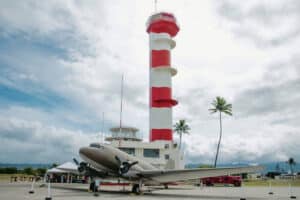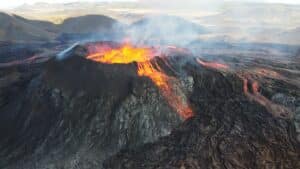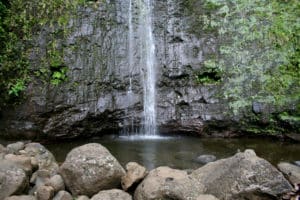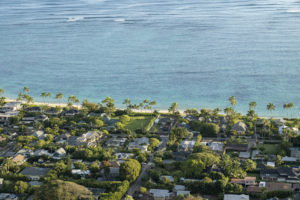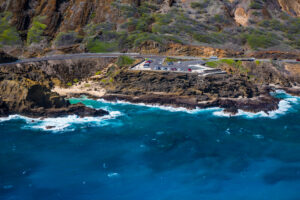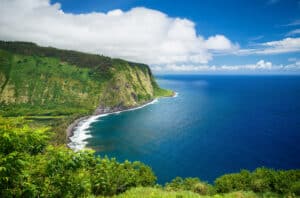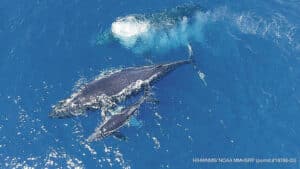
Photo of Diamond Head hike provided by @creative-captures_by_clinton
Rising prominently above Honolulu’s skyline, Lēʻahi, also known as Diamond Head Crater, is one of Oʻahu’s most iconic landmarks. From postcard photos to panoramic Instagram shots, this volcanic tuff cone has long captured the imagination of locals and visitors alike. But beyond its picturesque silhouette lies a rich history and a hike that rewards every step with unforgettable views.
A Crater with a Story
Lēʻahi was formed more than 300,000 years ago during a single, explosive eruption. Though dormant now, it stands as a prominent reminder of Oʻahu’s volcanic past. The name Lēʻahi comes from Hawaiian legend—“lae” meaning “brow of the tuna” and “ʻahi” referring to the fish. Early Hawaiians thought the crater resembled the shape of a tuna’s dorsal fin. The name Diamond Head was later coined by 19th-century British sailors who mistook the crater’s glimmering calcite crystals for diamonds.
Historically, the crater served as a strategic military lookout. In the early 1900s, the U.S. Army built bunkers, tunnels, and observation posts to defend the coastline. Many of these structures remain, adding an intriguing layer of history to the hiking experience.
The Hike to the Top
The Diamond Head Summit Trail is a moderate hike that’s just under 1.6 miles round trip but packs a punch with its steep elevation gain—about 560 feet from the crater floor to the summit. The path begins with a paved walkway and transitions to dirt switchbacks, narrow stairs, and even a tunnel before opening up to the summit platform.
Hikers should expect:
- Several sets of steep stairs—some narrow and winding
- Crowds–you will be in the company of many others
- A 225-foot unlit tunnel (bring a phone light if needed)
- Concrete military bunkers and observation decks along the way
Though the trail is well-maintained, the incline and staircases make it best suited for those in reasonably good health. Children can enjoy it too, but younger kids may need help on steeper portions. Most hikers complete the round trip in 60 to 90 minutes, depending on pace and photo stops.
The View Is Worth It

Photo of Diamond Head view provided by @stehania.jelinek on Instagram
At the summit, hikers are rewarded with sweeping 360-degree views. To the west, Waikīkī stretches out along the coast; to the east, the cliffs of Koko Head and the deep blue Pacific. On a clear day, you might even spot Molokaʻi in the distance.
Sunrise is a particularly magical time to visit. Watching the first rays of light break over the ocean and paint the landscape golden is an experience that’s hard to forget. Morning hikes also offer cooler temperatures, fewer crowds, and better parking availability.
Know Before You Go
Parking and Access:
Diamond Head is part of a state monument, and advanced reservations are required for all non-residents. Entry is $5 per person. Parking is available at the base of the trail inside the crater via Diamond Head Road for $10. If you’re not driving, rideshares and local tour companies also offer drop-off options near the entrance.
Facilities:
Restrooms, water fountains, and a small visitor center with souvenirs are available at the trailhead. A popular food truck selling shaved ice and snacks is often parked nearby—perfect for a post-hike treat.
What to Bring:
- Sturdy shoes (avoid flip-flops)
- Water (especially on sunny days)
- Hat and sunscreen
- Flashlight or phone for the tunnel
- Camera or phone for the views
Hours & Tips:
- The trail is open 6:00 a.m. to 4:00 p.m. (last entrance at 4:00 p.m.; gates close at 6:00 p.m.)
- Arrive early to beat the heat and the crowds
- Closed on major holidays like Christmas and New Year’s Day
Final Thoughts
Whether you’re a history buff, a nature lover, or someone chasing the perfect view, Lēʻahi offers something for everyone. The hike is a short but rewarding adventure with one of the best scenic payoffs on Oʻahu. Make sure your camera is charged—this is one hike where the journey and the destination are equally unforgettable.








